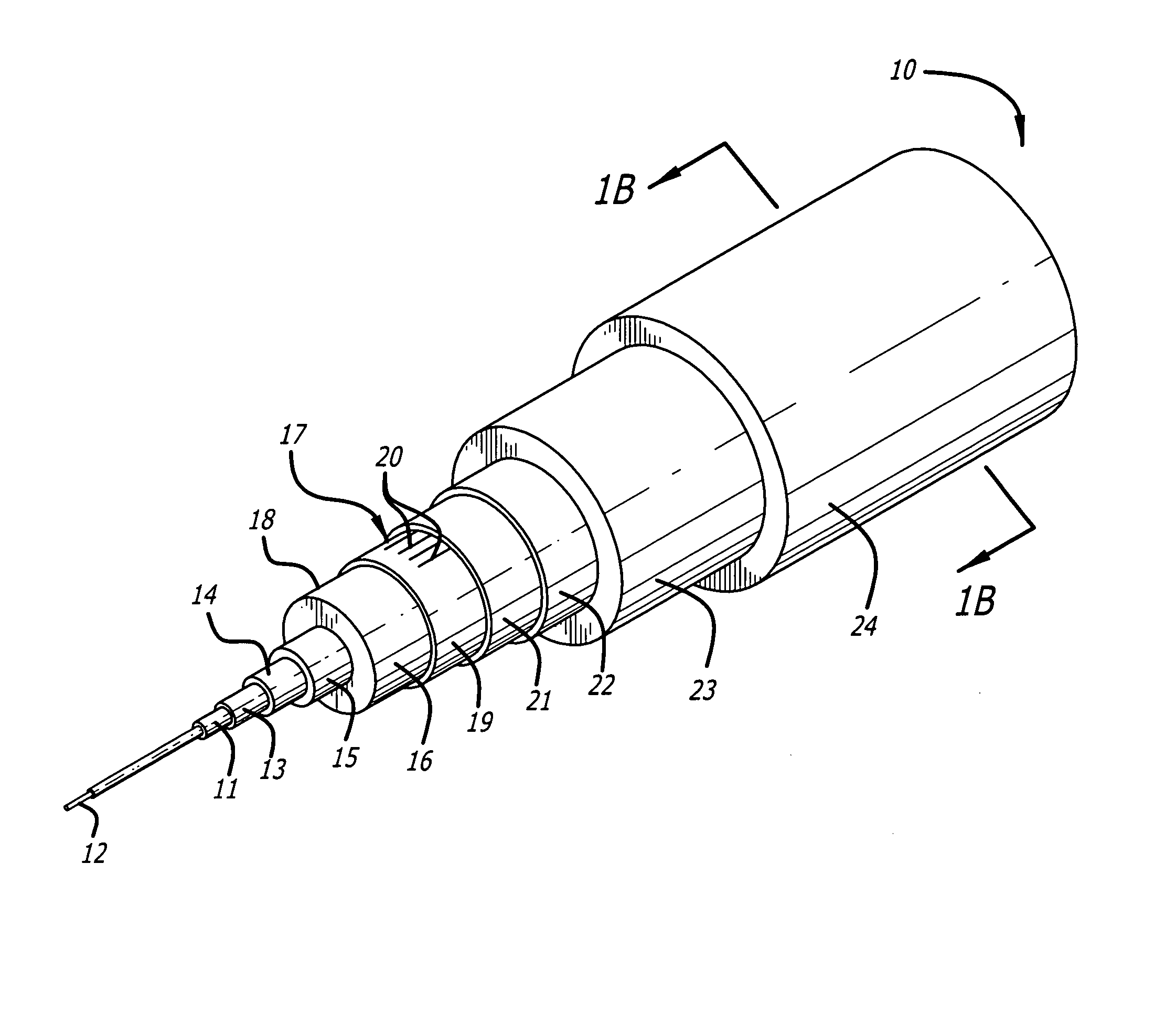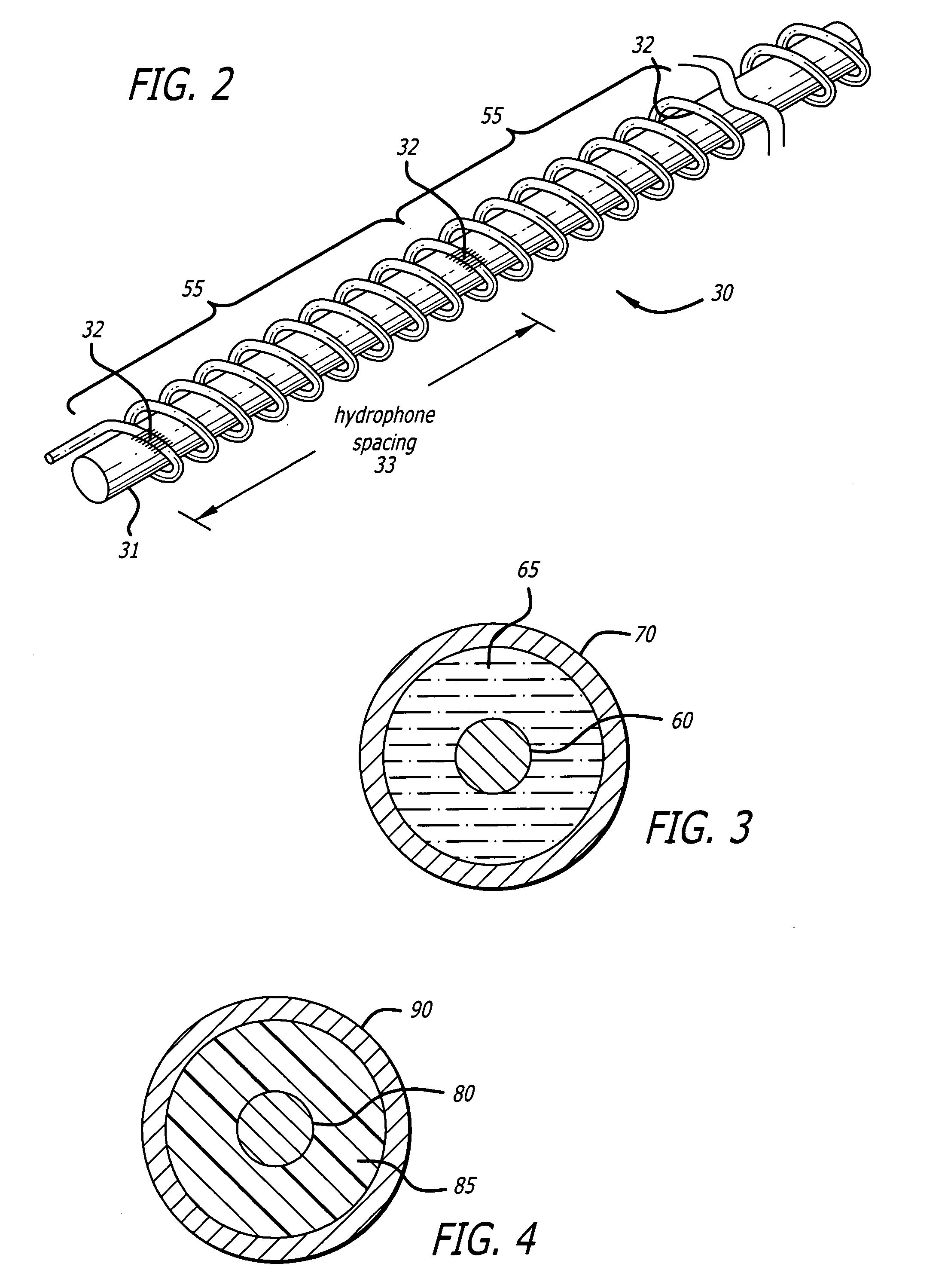Rugged fiber optic array
- Summary
- Abstract
- Description
- Claims
- Application Information
AI Technical Summary
Benefits of technology
Problems solved by technology
Method used
Image
Examples
Embodiment Construction
[0041] Referring now to the exemplary drawings, which illustrate, by way of example only, embodiments of the present invention, the present invention is generally embodied in a structure and method for forming that structure that includes a relatively flexible core through which extends an optical fiber. A series of reinforcing and protection layers are further would around the core, one layer of which includes windings of an optical fiber in which are formed one or more gratings, such as long period or Bragg gratings. The entire structure may further be surrounded by an outer jacket. In some embodiments, the resulting cable-line structure may be extended through a protective cylinder formed from a material such as glass, metal, polymer or other material as needed to provide additional protection to the sensor of the present invention depending upon the environment in which the sensor is to be deployed.
[0042]FIG. 1 is an overall view of one embodiment of a solid fiber optic hydroph...
PUM
 Login to View More
Login to View More Abstract
Description
Claims
Application Information
 Login to View More
Login to View More - R&D
- Intellectual Property
- Life Sciences
- Materials
- Tech Scout
- Unparalleled Data Quality
- Higher Quality Content
- 60% Fewer Hallucinations
Browse by: Latest US Patents, China's latest patents, Technical Efficacy Thesaurus, Application Domain, Technology Topic, Popular Technical Reports.
© 2025 PatSnap. All rights reserved.Legal|Privacy policy|Modern Slavery Act Transparency Statement|Sitemap|About US| Contact US: help@patsnap.com



